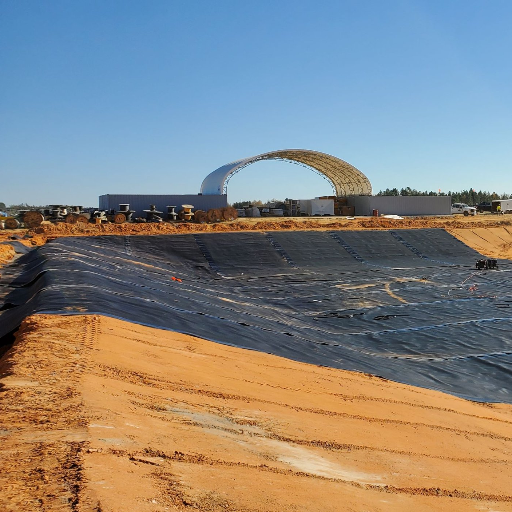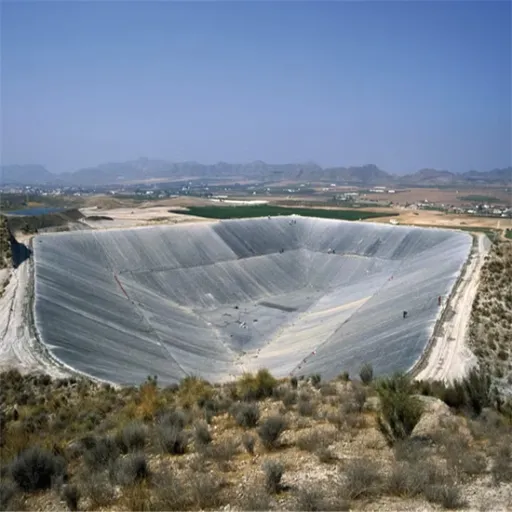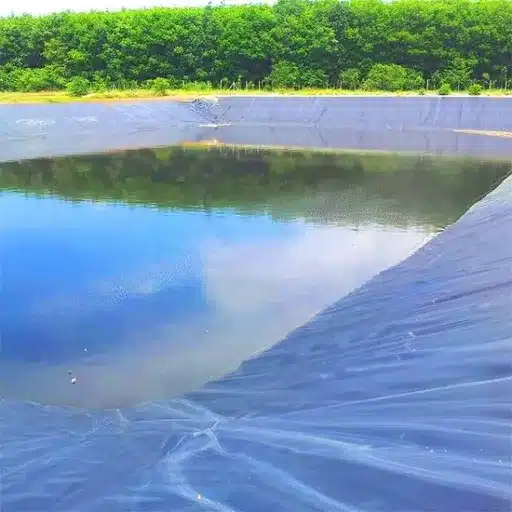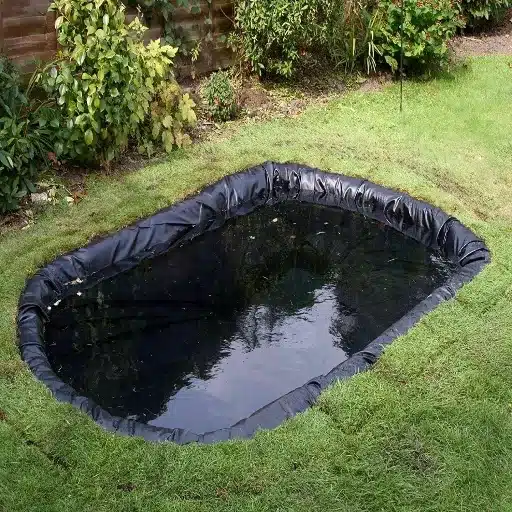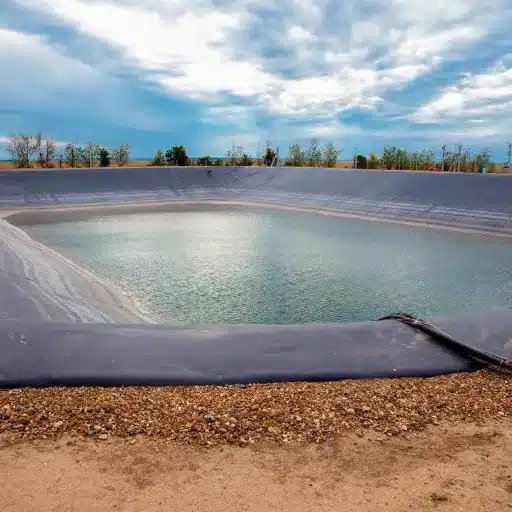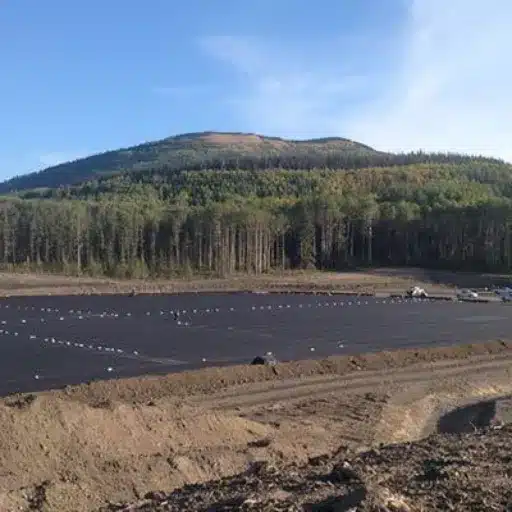While selecting materials for a pondic system, hardifunders must set criteria to help guarantee structural durability, sustainability, and reliability. Of all the options in the market, PVC geomembrane pond liners stand out for their exceptional impermeability and versatility. This article will analyze the primary characteristics and benefits of PVC pond liners as well as their applications, touching especially on the different mil thicknesses so that the hardifunder can make up his own mind. Whether creating a fish pond, water garden, or industrial containment, this article provides the necessary know-how to make the vegetation endure. So, keep reading to find out factors that must be considered and why PVC geomembrane liners could be the suitable answer for your project.
An Introduction to Pond Liners
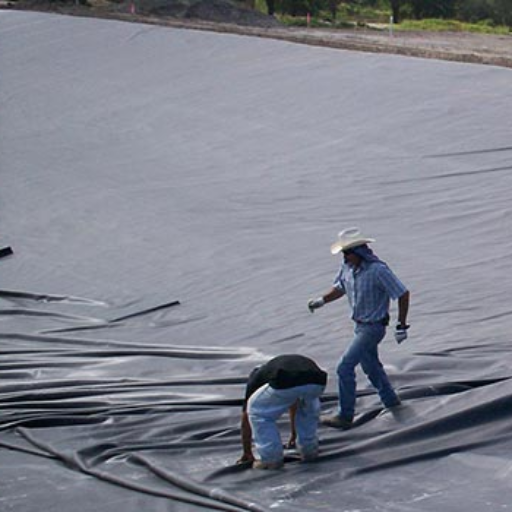
A pond liner is a barrier material used in making ponds waterproof so that water does not seep into the ground. They are designed to give a long-term performance and are usually made out of tough materials like High-density Polyethylene (HDPE), Polyvinyl Chloride (PVC), or Ethylene Propylene Diene Monomer (EPDM). Given their usages, in agriculture, landscaping, aquaculture, and water management, pond liners prevent levels from going down, safeguard the ecosystem, and promote efficient usage of resources. These characteristics of versatility and reliability makes pond liners a must for pond creation and maintenance in various residential, commercial, and industrial applications.
Understanding Impermeable Liners
Impermeable liners are very critical materials designed to become a barrier preventing migration of fluids, typically applied in ponds, landfill sites, reservoirs, and mining areas. Previously, the liners were soil or clay; with the advancement of technology, however, synthetic impermeable liners such as high-density polyethylene (HDPE), linear low-density polyethylene (LLDPE), and ethylene propylene diene monomer (EPDM) current are considered standard. These modern liners provide superior performance and endurance, safe to the environment.
According to recent data, HDPE liners are the most widely used because of their high chemical resistance and long life, which can be 20-30 years and more when well maintained. HDPE liners are also resistant to ultraviolet rays and can tolerate temperature changes. Their flexibility also allows them to be easily installed in complicated designs. Desert geomembrane installers share that HDPE liners generally have tensile strengths of more than 25 MPa (megapascals), thus allowing them to withstand high pressure and mechanical stresses under which they are subjected.
Recent advancements in manufacturing have introduced multi-functional liners that, for example, contain textured surfaces providing better grip for slope installations and also innovative geomembranes that are composites with geotextiles for increased strength and filtration ability. Some impermeable liners further sustainability objectives by being recyclable or made partially of recycled materials, saving this way their environmental impact.
These liners are used to help in water resource management systems, to keep away from contamination by hazardous materials and to allow projects that need their use for fine fluid containment. The engineering and development of impermeable liners is still evolving and aligning itself with higher environmental and industrial standards worldwide.
The Importance of Geomembranes in Water Features
Geomembranes play a vital role in contemporary water feature projects such as artificial lakes, ponds, and reservoirs. They create a watertight barrier to retain water, reduce seepage losses, and preclude contamination of the soil. New industry publications state that geomembranes with proper installation offer greater than 99.9% impermeability and hence the preferred choice for water containment.
Recent studies show that HDPE geomembranes have the highest resistance to UV radiation, chemical attack, and abrasion, giving a long life of about 20-30 years when maintained suitably. Also, in areas with high evaporation rates, geomembranes have decreased water loss by 70-90% with floating covers.
Geomembranes, therefore, form a value-for-money solution in water management projects. For instance, it is estimated that geomembrane liners associated with a 1-acre pond would save an average of $5,000 to $10,000 annually in water loss mitigation compared to unlined ponds. The situation is even better for controlling water quality due to their application in keeping the infiltration of harmful substances from surrounding soil, which is critical for aquaculture and irrigation systems.
Textured geomembranes and multi-layered liners are new innovations now embraced to enhance grip on steep slopes and performance enhancement in severe environments. These advances reflect the current trends within the industry that emphasize sustainability and durability, and therefore mark geomembranes as the very base for all water feature works globally.
Fish Pond and Water Garden Uses
Geomembranes are now considered an integral part in the design and maintenance of fish ponds and water gardens. These liners create an environment conducive to aquatic life by preventing water loss and contamination. Recent market data also showed that based on technological advancements and increasing needs for sustainable solutions in water management systems, the global geomembrane market is anticipated to grow from USD 2.1 billion in 2023 to USD 3.2 billion by 2030.
One of the particular advances includes HDPE geomembranes, which are especially advantageous due to their strength, chemical resistance, and long-term durability. These liners are used extensively for aquaculture applications to maintain an appropriate level and water quality, with studies showing that they can help reduce water loss by as much as 40% as compared to conventional techniques. In addition, newer materials such as EPDM provide more flexibility and ease in installation, making them particularly suited for complex water garden designs.
In all, these improvements allow geomembranes to minimize water leakage risks and depletion of natural resources, hence having ecological and functional significance. This makes them an indispensable option for landscape architects, aquatic engineers, and environmentally conscious persons looking to build fish ponds or ornamental water gardens.
Types of Pond Liners
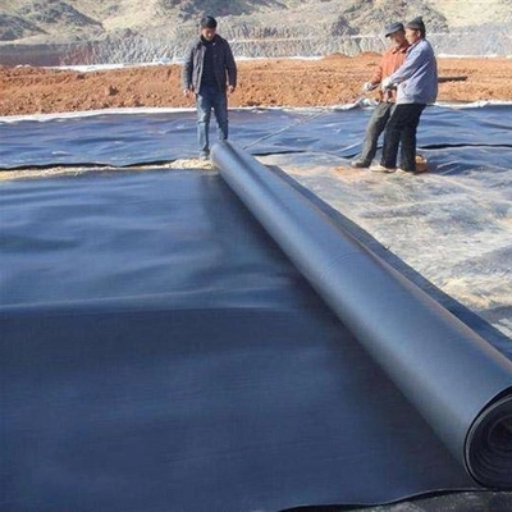
When selecting a pond liner, I keep in mind the three basic types: flexible liners, preformed liners, and concrete liners. Flexible liners (EPDM or PVC) provide unlimited versatility and are very easily customized to fit any shape or size. Preformed liners are rigid and are suitable for smaller, predetermined designs and offer more convenience but less adaptability. Concrete liners are the most durable and long-lasting, requiring more effort and expertise in installation; thus, they may be better suited to large or permanent ponds. Each type has its advantages, within which I make my choice looking at the peculiarities of the project.
PVC Liner: Benefits and Features
PVC liners are among the most famous materials used in pond construction because of their cheap price, flexibility, and easy installation. One of the advantages provided by PVC liners is the adaptation to all kinds of pond shapes and sizes. They usually range from 20 to 40 mils in thickness, where the thicker the liner, the more resistant to puncturing it is.
Recent scientific findings and market information reveal the fact that PVC lines, when treated with stabilizers, show very high resistance to UV degradation, which is definitely a must if the pond is exposed to direct sunlight. Such liners technically have a near-zero permeability to water, making them a promise of waterproofing for years to come. At the same time, being elastic, PVC liners will allow for a certain degree of ground movement in contrast to rigid materials that can lead to cracking or leaks.
Being a lightweight liner, it greatly ease installation. Typically, for a backyard pond measuring about 10 by 15 feet, the installation of a PVC liner will cost somewhere in the neighborhood of $400-$700, depending on the thickness of the liner and whether any types of underlayments are installed above or below it. Many of these modern PVC liners are made with the environment in mind, with the greener options being non-toxic and safe for aquatic life and compatible with different types of plants and fish species.
PVC liners thus remain a favorite among both hobbyists and professionals, combining the practical with an economical choice.
HDPE Liners: Durability and Cost-Effectiveness
High-Density Polyethylene liners are famous for their durability and relative cheapness, giving them a vast range of application in various industries. These liners resist UV rays, chemicals, and puncture injuries and have service life for a very long time under tough climatic conditions. According to recent data, HDPE liners provide a service life of over 20 years with minimal maintenance when exposed under normal conditions.
The cost of HDPE liners varies from $0.50 to $1.00 per square foot, which suits more large-scale applications such as agricultural ponds, landfills, and mining operations. Thickness choices fluctuate among 20 to 120 mils, so that the users choose a liner as per their preference-whether for small backyard ponds or for industrial projects on a vast scale. Welded joints formed by heat make leakage less risky in installations using HDPE liners.
The recent development in technology of HDPE liners includes the advancements in chemical composition to enhance their flexibility and strength. These innovations made HDPE liners even more suitable to changes in temperature and rough terrains. Pricewise while packing quite a punch in terms of performance, HDPE liners retain their majority choice in long-term environmental containment and water management solutions.
Comparing 30 Mil vs. Other Thicknesses
When comparing 30 mil HDPE liners to other thicknesses, the key differences lie in durability, flexibility, weight, cost, installation, and environmental resistance.
| Parameter | 30 Mil | 40 Mil | 60 Mil | 80 Mil |
|---|---|---|---|---|
| Durability | Moderate | High | Very High | Maximum |
| Flexibility | High | Moderate | Low | Very Low |
| Weight | Light | Moderate | Heavy | Very Heavy |
| Cost | Low | Moderate | High | Very High |
| Installation | Easy | Manageable | Challenging | Complex |
| Resistance | Moderate | High | Very High | Maximum |
Benefits and Drawbacks of Using Pond Liners
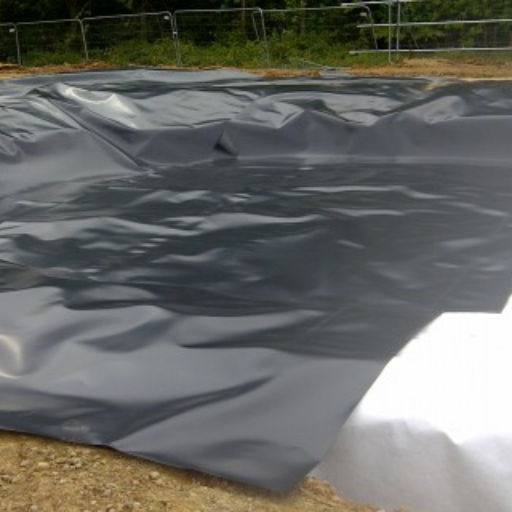
Depending on the specific needs of the project, I find that every type of liner has its advantages and disadvantages. For instance, the 30 mil liner is lightweight, cheap, and easy to install but may not really stand out in terms of durability. On the other hand, the 80 mil liner is undoubtedly the most durable and resistant, but it has a heavy weight, high cost, and is harder to install. Personally, I tend to analyze cost, flexibility, and performance over time, to decide which is suitable for my application.
Advantages of Impermeable Liners
Impermeable liners prove to be of utmost importance across several industries such as construction, agriculture, and environmental protection, as their core function is to obstruct fluids from passing through and minimize contamination. HDPE liners are considered quite popular due to their durability and flexibility. These liners are usually resistant to chemicals between -40°F to 176°F, making them an all-weather choice. In recent times, industry data reflect that HDPE liners have a puncture resistance of 400 to 800 psi, thereby offering respectable performance to demanding facilities such as landfill caps, reservoirs, and waste containment.
Another common form of the impermeable liner is Linear Low-Density Polyethylene (LLDPE), the liner being famous for its flexibility and elongation characteristics-the stretch for some being in excess of 600% before breaking, thereby providing adaptability to irregular surfaces such as mining sites and ponds. In addition, enhanced production technologies have helped keep down the cost of these liners while maintaining their efficacy-the period price usually falls somewhere between $0.50 and $1.00 per square foot, depending on thickness and material.
Impermeable lining systems track environmental protection but also help with regulatory compliance in many industries; hence this makes them a wise investment in sustainability for projects that require long-term durability.
Potential Disadvantages and Considerations
Depending on its utility and the benefits that it bestows, the impermeable liner also possesses some drawbacks and points requiring consideration. One big concern is their environmental impact during manufacturing and their disposal. Mostly, liners are made up of those materials, such as high-density polyethylene (HDPE) or polyvinyl chloride (PVC), derived from non-renewable fossil sources. Manufacturing may work out to be one of the reasons for greenhouse gas emissions, but the tougher part is the recycling or proper disposal for them at the end of their life cycle.
The other side to consider is the costs for the installation, as those can easily vary in great amounts according to the degree of complexity in the project and the conditions in the site. To illustrate, taking data records for the year 2023, fees for professional installation may be somewhere in the range of going from $1.50 to $2.50 per square foot, according to how accessible the site is and to what level the required preparation is. Maintenance also needs consideration. And it doesn’t matter how durable your liner is; you will begin observing wear over time, maybe some interference with cuts, punctures, or by UV degradation; the environmental conditions are harsh. Costs for repairing these can accumulate quite a bit throughout the liner’s lifespan.
The professional and technical side lies in the selection of the right thickness and material for the given application. In most cases, were wrong or wrong are considered in either or both of these areas, therefore causing the liner to be less effective in resisting chemical or physical damages, which, in turn, causes further problems in the implementation phase. So, while net impervious liners are a very effective, even environmentally better-supported, solutions, due diligence in planning, application, and disposal are crucial enough for the final gains to outweigh the disadvantages.
Expert Opinions on Longevity and Performance
Recent studies and industry reports echo that one of the primary factors for extending the life of an impermeable liner is the choice of the right material and proper maintenance. According to data from the Geosynthetics Research Institute (GRI), high-density polyethylene (HDPE) geomembranes are among the most durable liners, with service lives of around 36 years under favorable conditions, including limited UV exposure and chemical attack. Furthermore, there exist novel manufacturing processes that allow for the creation of composite liners, which enhance strength and flexibility by combining synthetic and natural components.
Furthering the emphasis on the environmental benefit of impermeable liners are studies on the environment. For example, agricultural reservoirs with modern geomembrane lining ensure 98% less water loss through seepage. Similarly, landfill operators report between 90% and 95% reduction in leachate migration into surrounding soils when using double-layered liner systems integrated with leakage detection.
Experts further highlight the importance of inspection and maintenance routines to sustain performance. Ensuring regular inspection regimes to detect wear and tear is particularly critical for high-stress applications such as mining tailings dams, where failure could lead to severe environmental and economic impacts. Such insights validate and highlight that staying abreast of material development and industry best practices are imperative for document maximization of the efficient and reliable use of impermeable liners.
Installation Processes for Pond Liners
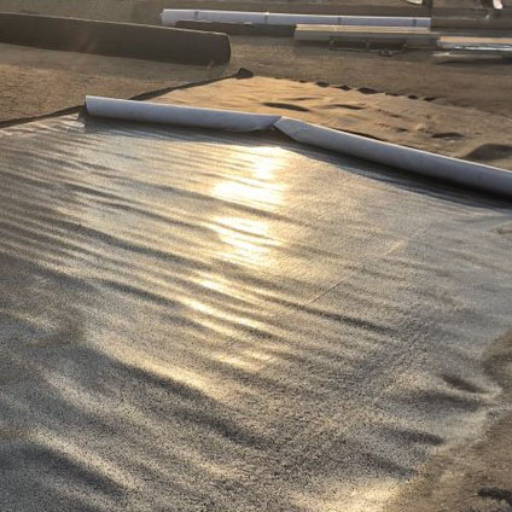
Step-by-step Guide for Installing PVC Liners
The installation of PVC liners is the most important when considering their performance in specialized applications requiring exposure to a number of harsh elements; otherwise, it may become compromised through permeation or deterioration. Here is a step-by-step installation guide for PVC liners along with important facts from the latest best practices and data:
Site Preparation
First and foremost, any debris such as stones or vegetation that might puncture or damage the liner must be removed from the installation site.
Where possible, try and level the surface to ensure a clean bed. It may be necessary to compact the soil to prevent shifting or settlement.
Below the liner, consider placing a layer of geotextile to prevent damages or punctures caused by sharp surfaces.
Measurement and Cutting
Precisely measure the site, bearing in mind slopes, edges, and overlaps.
PVC liner sheets should be cut according to these measurements, leaving at least 6–12 inches of overlap between sheets for the seams to be welded together. PVC liners are generally between 20 and 60 mil thick, depending on thickness needed for an application.
Laying of Liner
Unroll the PVC liner on location and let it rest for a few hours to let go of creases and folds from transport.
The liner installation begins at the bottom of the project area and moves upward toward slopes or walls. The least amount of unnecessary foot traffic should be exerted on the liner during placement.
Seam Welding and Bonding
Once placement is complete, begin welding the seams and make sure the welds are tight by means of hot air welding or extrusion welding. Hot-air and extrusion welding also ensure that the integrity of the liner seams is maintained along with its flexibility.
Quality control should be harnessed during welding to test the seam, using vacuum test or air pressure tests, among other methods, to verify seam integrity.
Anchoring the Liner
PVC liner edges shall be secured by means of anchor trenches, preventing movement under hydrostatic pressure. Anchor trenches should be at least 12 inches in depth and must be backfilled with sufficiently compacted soil.
For ultimatum high-slope installation, other anchor systems such as batten bars or geogrid reinforcement shall be considered.
Inspection and Testing
A thorough inspection shall be done to ensure that none of the following weaknesses: loose seams, punctures, improperly anchored, have made it into the installation.
After lining is complete, fill the pond or reservoir slowly while watching performance to make sure that it fits properly and remains stable.
Maintenance and Monitoring
After completion of installation, undergo periods of visual inspection and testing so as to determine wear and if liner integrity is being sustained.
According to data, PVC liners can last anywhere between 20-30 years or longer when properly maintained; therefore, continuing maintenance must be taken seriously.
Following these steps will greatly contribute to an impeccable installation process of PVC liners, thereby increasing effectiveness and further extending the life expectancy of the liners, and thereby decreasing operational hazards in the long run. When installation methods and techniques are well managed by cutting-edge apparatus, they would yield a more reliable outcome, adhering to the industry standards.
Effective Installation Tips for HDPE Liners
HDPE liners find wide application in landfill containment, mining, and water reservoirs due to their durability and chemical resistance. For effective performance and long life, it is required that utmost measures be taken, employ contemporary installation methods. According to recent publications on the evolution of installation guidelines for HDPE liners, here is a description supported by related data:
Surface Preparation
Proper surface preparation is a safeguard from damage throughout installation. The subgrade shall consist of a smooth surface, free of any debris, and compacted well; any irregularity might puncture the liner. Research and development in this field indicate that a rough or uneven surface contributes to liner failure by as much as 30 percent, and hence the finest preparation is advisable.
Seam-Welding and Quality Control
HDPE liner seams are typically welded by using extrusion or fusion welding. It is paramount to uphold strict temperature control during this process, usually between the temperatures of 400 °F and 450 °F (204 °C and 232 °C), depending on the type of material. Studies outlined that improper welding could reduce the strength of the weld seam to 40%, so a well-trained technician and strict quality control measures must be adopted. Non-destructive testing such as vacuum box testing or air channel testing is gaining more acceptance to assure the integrity of the seams.
Anchor Trench Design
The anchor trench, if correctly constructed, is able to stop the liners from being displaced by external environmental forces such as wind or water flow. Data from latest engineering researches state that dimensions of the trench should be considered on the basis of a project-specific need, generally 12-18 inches depending on-the-thickness of the liner, and 12-24 inches wide based on varying conditions of the environment.
Environmental Considerations
During installation, the ambient temperature plays an important role in assuring proper liner placement. The ideal temperature for carrying out installation ranges between 40 °F and 104 °F (4 °C and 40 °C) as this temperature range is great for controlling thermal expansion and contraction.
Material Selection and Thickness
A paramount consideration must be thickness for UV resistance and structural integrity. Thickness generally ranges from 40 mil (1.0 mm) to 80 mil (2.0 mm) depending on the application. Recent testing data indicates that 60 mil liners offer an ideal number struck down between durability and flexibility, making them the most preferred choice for most projects.
Adherence to all these comes to best practices put into the implementation of modern-day techniques to be able to prolong the service life and ensure the reliability of the HDPE liners, with an aim to meet requirements as stipulated by the environmental regulations and industry standards.
Common Damage Caused To Installations
Proper HDPE liner installation dictates performance and the duration of life. Below are some of the common mistakes shared, with information and studies from recent times:
Poor Surface Preparation
Faulty preparation subgrade will over time develop stress points that damage the liner. Recent data shows that about 30% of liner failures are attributed to irregular or improperly compacted surfaces. Hence, a smooth, debris-free, properly compacted, and well-graded surface should be assured. This is to eliminate the risk of punctures or tears.
Lack of Quality in Welding
Welded seams are critical for the integrity of HDPE liners. Research in the modern age shows that more than one-fourth of all the leaks in the liners are due to improper seam welding. The use of modern welding machines and vigorous testing in situ with vacuum or air pressure tests on seams greatly reduces any future occurrence of seam problems.
Overstretching the Liner
HDPE materials are meant to contract and expand as temperatures change. Overstretching the liner while installing may develop tension that reduces its lifespan. Room for thermal expansion is recommended during installation, especially in areas where temperature fluctuations exceed 40°F (4°C).
Neglecting Anchor Trench Design
A poorly designed or installed anchor trench almost definitely threatens the stability of the liner. Google Funded Environmental Research affirms the significance of an anchor trench design that is deep and wide enough to resist any forces coming externally, such as wind uplift or water flow pressure.
Lack of On-Site Quality Control
Inadequate quality control during installation results in undetected defects which lead to long-term failure. Industry sources reveal that having an inspector on site can reduce problems post-installation by up to 40%. Inspections should be carried out regularly, and quality assurance protocols should be strictly followed.
Through corrections of these common mistakes and by embracing installation technique advancements, efficiency and service life of HDPE liners can be greatly improved.
Industry Uses of Geomembrane
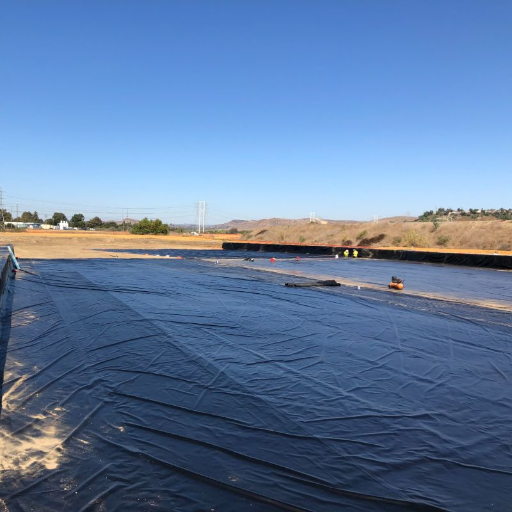
Geomembranes are highly preferred across industries for the application of durability and impermeability. Some of the most common instances are waste containment systems, especially landfills where the wall of geomembranes prevents leachate from polluting groundwater. Besides that, they can be used in mine tailings dams to protect against hazardous leakage. In agriculture, they are installed for water storage and irrigation ponds to promote efficient water management. Versatility very often translates to reliability, making these an essential component in the sphere of environmental protection and resource management.
Construction Applications for Pond Liners
Pond liners are indispensable in construction projects involving water containment and environmental protection. These versatile materials lend themselves to creating artificial ponds, reservoirs, and water features in both residential and commercial settings. The most important feature of these materials is their capacity to retain water from seeping, which helps preserve the structure and saves resources.
HDPE liners, given their resilience in UV inhibition, resisting chemicals and adverse weather conditions, are routinely among the most utilized liners. Construction data confirms that HDPE liners have a service life of over 20 years with proper installation, making them very cost-efficient for long-term projects.
Another important construction application for pond liners is in stormwater systems, where these liners are used in the formation of retention and detention ponds to control stormwater runoff from urban regions. This curtailment would alleviate flooding and erosion risks as well. Moreover, geomembrane liners can curtail water loss in irrigation systems for agricultural infrastructure, making certain that water is used efficiently.
In the construction application of pond liners, installers carry out previous site preparation work, liner placement, and seam welding to ensure a tight fit. Improvements in liner chemistry and form, such as reinforced composites, provide a further performance enhancement that broadens their application.
Worldwide, the pond liner market is on the rise, with a continuously increasing compound annual growth rate (CAGR) projected over the next decade. Recent reports also estimate that the geomembrane market will exceed $3,000,000,000 by 2030, with increased demand for sustainable water management solutions in construction and environmental projects. These numbers reinforce the growing importance of pond liners as a critical technique of modern construction.
Environmental Protection and Remediation
In the field of environmental protection and remediation, pond liners create an essential barrier guarding groundwater and adjacent ecosystems from the contamination of hazardous substances. Particularly relevant to industrial applications, mining projects, and landfilling operations, they guarantee the containment of hazardous materials. Due to reinforcement tightening environmental laws and vast awareness of contamination of soils and water, recent studies state that the global geomembrane market has risen by leaps and bounds. For instance, the market is projected to grow at a CAGR of about 7.5% from the year 2023 to 2030, when environmental safety and waste management are counted amongst the forefront campaigns in governmental agendas.
The pond liners have also turned out to be important in the remediation of polluted areas, which is basically an attempt to restore such polluted areas. More than 80% of remediation efforts now depend on geomembranes to isolate contaminants, according to a recent report, which establishes their efficiency for attaining environmental compliance. Development in liner materials such as HDPE liner advancements has enhanced their life, chemical resistance ability, and environmental compatibility further. These advancements are driving the industry to meet the growing demand for sustainable solutions for water and soil conservation projects worldwide.
Use in Fountains and Streams
The impermeable barriers posed by geomembranes allow great functionality in the retention of water for various fountains and artificial streams while also adding a heavy aesthetic appeal. In the face of an often unfriendly soil situation, these liners offer a watertight shell that ensures that no water is lost on seepage, thereby, enhancing conservation measures. Industry was experiencing a huge delight in using HDPE liners, said to represent some of the most popular liners for long-term resistance to UV rays, chemicals, and punctures.
An increase of about 7% in the global demand for geomembranes in decorative water features including fountains and ornamental streams has been reported in 2023 in the past five years. Urban landscaping projects and increasing acceptance of eco-friendly designs have largely cemented this growth. Further, the use of geomembranes in these structures also aids water conservation by reducing unnecessary water loss, thereby cutting down on operational expense and environmental impact. This balance between beauty and sustainability sets geomembranes apart as a solution for the modern-day water features.
Reference sources
1. The Usability of Clay/Pumice Mixtures Modified with Biopolymer as an Impermeable Liner
- Authors: Zeynep Neşe KURT ALBAYRAK, Gamze Gencer
- Journal: KSCE Journal of Civil Engineering
- Publication Date: November 4, 2020
- Citation Token: (ALBAYRAK & Gencer, 2020a, pp. 28–36, 2020b, pp. 28–36)
- Summary:
- This study investigates the effectiveness of clay/pumice mixtures modified with biopolymer as impermeable liners. The research focuses on the material’s usability in construction applications, particularly in landfill sites.
- Methodology: The authors conducted laboratory tests to evaluate the hydraulic conductivity and mechanical properties of the modified mixtures. The results indicated that the biopolymer modification significantly improved the impermeability of the clay/pumice mixtures.
2. A Comparison of Stress-Displacement for a Pressure Tunnel with Impermeable or Permeable Liner in Elastic Porous Media
- Authors: Ming-Bin Wang, Ke-Song zhi, W. Ding, G. Wang
- Journal: Computers and Geotechnics
- Publication Date: November 1, 2023
- Citation Token: (Wang et al., 2023)
- Summary:
- This paper compares the stress-displacement behavior of pressure tunnels lined with impermeable versus permeable materials in elastic porous media. The study aims to understand how different liner types affect the mechanical response of tunnels under various loading conditions.
- Methodology: The authors employed numerical simulations to analyze the stress-displacement fields for different liner configurations. The findings suggest that impermeable liners provide better structural integrity under pressure conditions compared to permeable liners.
3. Evaluation of Hydraulic Conductivity and Self-Healing Potential of Punctured Geosynthetic Clay Liner
- Authors: A. Dixit, Deepesh Singh, S. K. Shukla
- Journal: International Journal of Geotechnical Engineering
- Publication Date: May 27, 2024
- Citation Token: (Dixit et al., 2024, pp. 502–516)
- Summary:
- This research evaluates the hydraulic conductivity and self-healing capabilities of a modified geosynthetic clay liner (GCL) that incorporates local soil materials. The study aims to assess the liner’s effectiveness in preventing leachate migration in landfill applications.
- Methodology: Experimental tests were conducted on GCL specimens with punctured holes of varying sizes. The results demonstrated that the modified GCL exhibited low hydraulic conductivity and significant self-healing potential, making it suitable for use as an impermeable barrier in waste management.
Frequently Asked Questions (FAQs)
What is an impermeable liner and what are the uses?
An impermeable liner is designed to resist the passage of liquid, itself constructed usually in HDPE or reinforced polypropylene. It finds uses in all manner of containment processes, from fish pond liners to wastewater containment and garden ponds. It is meant always to prevent contamination and strive to preserve the integrity of potable water resources.
How do the HDPE and PVC liners compare?
HDPE liners have a high degree of flexibility and are generally resistant to punctures, making them very suitable for very demanding applications including those with harsh environments, weather conditions, etc. PVC liners are better from a price point and quicker in installation procedures, but they may not be very abrasion resistant as those made of HDPE. Generally, cost efficiency and specific requirements of work are considered when making a decision.
Are impermeable liners suitable for koi ponds?
Yes; in fact, these liners can be highly recommended for koi ponds since they offer one of the most impermeable barriers to keep water intact. HDPE and geosynthetic types of liners are considered preferable since they are capable of withstanding chemical or waste action while preserving a safe environment for koi fish.
What are the benefits of using a waterproofing geomembrane?
A waterproofing geomembrane comes with certain benefits such as high flexibility and corrosion resistance. These liners may be prefabricated for a specific application, making installation easier in several environments, for instance, lining canals or containment for streams and fountains.
Do impermeable liners pose any threat to the environment?
Most modern impermeable liners are produced using environmentally friendly materials and processes. For instance, some liners are created from thermoplastic materials that are recyclable and contain no harmful plasticizers. Consideration for sustainability sets such liners in applications involving potable water and helps in lessening the environmental impact.
What thickness should I select for my pond and containment liner?
A 20 mil thickness is typically chosen for most pond and containment applications as it gives a good compromise between better hardiness and flexibility. Trying to go for thicker liners promises better puncture resistance as well as longevity but it would be more challenging to install. While selecting the appropriate thickness, it only makes sense to consider what your project really needs.
How does one install a geomembrane liner?
To install a geomembrane liner, site preparation must be followed by laying out the liner and then securing the liner. The ground must be made smooth and kept free of debris until time for installation. Most liners, particularly the HDPE and PVC types, are supplied in large sheets that may be either easily cut or joined during the installing process, and hence are quite straightforward and efficient to install.
What are some of the popular containment applications for impermeable liners?
Some containment applications where impermeable liners are used include landfill sites, wastewater treatment plants, and agricultural ponds. These liners are able to contain liquids such as chemicals or waste, preventing leakage and compromising the environment. Also, these liners help maintain potable water quality and prevent potable water leakage solutions.

